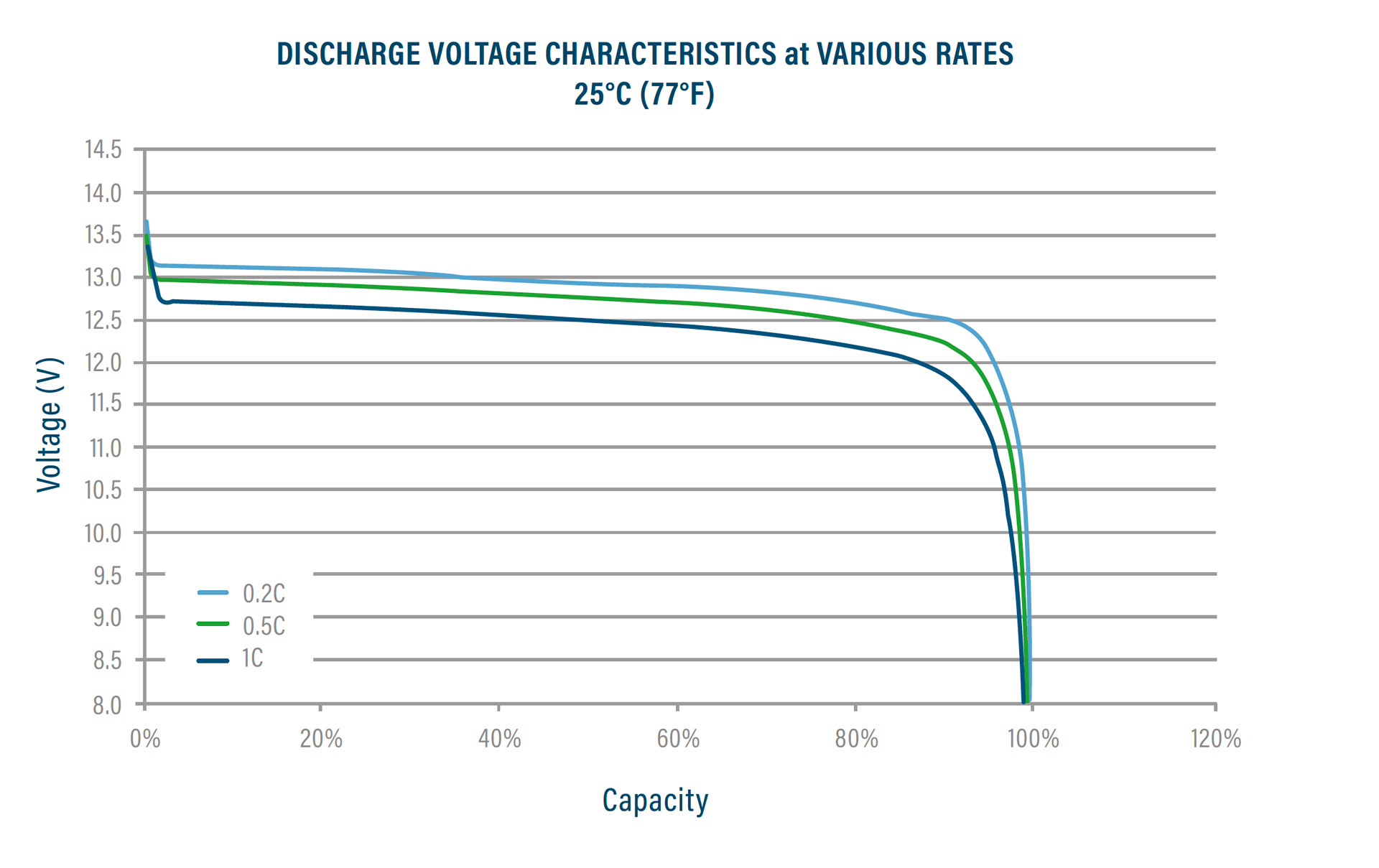Deciding on which battery to invest in for your energy system can be daunting. There are countless specifications to compare - from amp-hours to voltage to cycle life to efficiency. Another specification, battery reserve capacity, is important to understand, as it can greatly impact the battery’s lifespan as well as determine how the battery will perform under sustained loads. In general, battery reserve capacity indicates how long a fully charged battery can run without dropping below a specific voltage, as it is especially important to know in the event that you need a battery for consistent loads over time, as opposed to short bursts. Below we’ve compiled key information you should know about reserve capacity before investing in your next battery.
What is battery reserve capacity?
Commonly referred to as RC, reserve capacity is the amount of time, in minutes, that a 12V battery can run before dropping to 10.5V. It is measured in reserve minutes. For example, if a battery has a reserve capacity of 150, that means it can supply 25 amps for 150 minutes before the voltage drops to 10.5V.
Reserve capacity differs from amp-hours (Ah) in that reserve capacity is simply a measure of time, whereas amp-hours measure the amount of amps, or current, that can be produced in one hour. You can calculate reserve capacity from amp-hours, and vice versa, as they are related, but they are not the same thing. When comparing the two, RC capacity is a much more accurate measurement of how long a battery will last under sustained loads as opposed to amp-hours.

Why is battery reserve capacity important?
Reserve capacity is used to understand how long you can run your batteries with consistent loads. It becomes very important to understand if you intend to discharge your batteries for a longer period of time and it is a great indicator of battery performance. If you know your reserve capacity, you will have a better understanding of how long you can use your batteries, and how much power you will be able to leverage. Whether you have a reserve capacity of 150 minutes or 240 minutes is a big difference and can drastically change how you use your batteries as well as how many you may need. If you’re spending a full day on the water fishing, for example, you should know how much power and time you’ll have with your battery so that you can time your travel effectively and get home without running out of juice.
Reserve capacity directly impacts the power you are able to generate with your battery. Since power is equivalent to amps multiplied by volts, if your battery voltage drops from 12V to 10.5V, the power drops. Also, since energy is equivalent to power times the length of time used, if the power drops, so does the energy produced. Depending on how you intend to use your battery - such as for days-long RV trips, or for an occasionally used golf cart, you will have different reserve capacity needs.
How does reserve capacity differ between lithium & lead acid batteries?
First, while lithium batteries do have reserve capacities, they are not usually rated or referred to this way, as amp-hours or watt-hours are the more common ways lithium batteries are rated. That being said, lead acid batteries have a lower reserve capacity on average than lithium batteries. This is because lead acid batteries exhibit the Peukert Effect in which their reserve capacity decreases as the rate of discharge decreases. The Peukert Effect does not apply to high-quality lithium batteries, and the amp-hour rating of these lithium batteries is the actual amount of charge you can receive from the battery under the majority of conditions.

Specifically, the average reserve capacity of a 12V 100Ah lead-acid battery is around 170-190 minutes, whereas the average reserve capacity of a 12V 100Ah lithium battery is about 240 minutes. Lithium batteries offer higher reserve capacity at the same Ah rating, so you can cut down on space and weight by installing lithium batteries instead of lead acid. Our RB100 has a reserve capacity of 240 minutes at 25 amps, offering higher capacity and longer-lasting power at a fraction of the weight. The RB100 is also just 30 pounds, compared to a 12V 100Ah lead acid battery that weighs 63 pounds.
To learn more about how to calculate your energy needs and find the optimal battery for your application and usage, visit our Lithium Battery Selector Tool. If you need additional help determining the optimal battery for your specific use case - from boating to your next RV trip, our experts are available to walk you through the process. Contact a member of our team today to get started.
